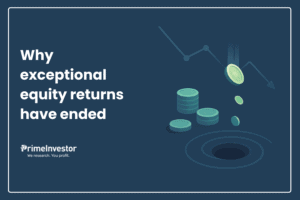With bank deposit rates plumbing the depths, fixed income investors are hard-pressed to find investment options that can deliver better returns without big risks. Power Finance Corporation’s (PFC) retail offer of secured non-convertible debentures (NCDs) appears well-timed to capitalise on this need. But should you bite the bait? If yes, which of the 7 bond options is worth a look? An analysis.

What’s on offer
PFC’s retail bond offer is intended to raise money for lending, repaying debt and other corporate purposes. The current bond offer, which opened on January 15 and closes on January 29 2021, is the first tranche of the issues planned for 2021 and hopes to raise Rs 5000 crore. The details are as follows:
- It is open to resident individuals and HUFs.
- The bonds carry a face value of Rs 1000 each, with a minimum application amount of Rs 10,000.
- Allotment will be on a first-come-first-served basis.
- These demat bonds will be listed and traded only on BSE.
- They are backed by the security of a first charge on PFC’s receivables and rated AAA by CRISIL, CARE and ICRA.
- There are no Put or Call options which could result in premature closure.
- The interest receipts are taxable and there are only interest pay-out options available.
The issue offers you the choice of seven types of bonds detailed below. While the tenures range from 3 to 15 years, the rates range from 4.8% to 7.15%. Series V alone, which is a floating rate bond, promises an 80 basis point spread (increase) over the prevailing yield on the 10-year g-sec. The spread will be calculated on the 15-day average of the daily yield disclosed by FIMMDA, prior to each interest payout date. If you fail to indicate your choice, PFC will allot the 10-year fixed rate bond carrying 7% pa interest as the default option.
Business
Evaluated purely as a non-bank lender, PFC’s business carries more negatives than positives. As the Government of India’s nodal agency for funding power sector infrastructure, PFC finances generation, transmission and distribution projects, apart from central and state power utilities. This makes for a concentrated loan book, with government utilities making up 86% of loan book and private sector power producers the rest.
Government power utilities tend to be haunted by losses and delayed payments, as State electricity tariffs don’t match generation and distribution costs. Covid disruptions have aggravated these problems, prompting the Centre to come up with a bail-out package. Private sector power producers have built up high debt levels thanks to unremunerative tariffs, high fuel costs and lack of assured offtake. They are the main contributor to the non- performing assets (NPAs) on PFC’s books. Going forward, a speedy resolution of private sector power NPAs through the IBC route and the ability of the recent discom package to alleviate the liquidity woes on state utilities hold the key to PFC’s performance.
PFC’s acquisition of a majority stake in Rural Electrification Corporation (REC) in March 2019, at the Government’s behest, has expanded its size but not helped its financial position. Prior to the acquisition, PFC had a Rs 2.78 lakh crore loan book with a capital to risk weighted assets ratio (CRAR) of 17.1%, Tier 1 capital ratio of 14%, gross NPAs of 9.6% and net NPAs of 4.8% (as of March 2018).
By March 2020, PFC’s consolidated loans (including REC) were Rs 6.67 lakh crore and CRAR 16.1% only slightly higher than the statutory 15%. Gross NPAs, though high, showed some improvement by March 2020 at 7.4% and net NPAs at 3.6%. In the six months ended September 20 2020, PFC reported a standalone net profit of Rs 3,784 crore on total revenues of Rs 17,988 crore.
The risks associated with PFC’s exposure to the troubled power sectors is however mitigated by its ability to raise prodigious funds at low rates, thanks to it being a 55.9% Government of India owned institution. PFC has been able to regularly tap a variety of sources for funds even amid the pandemic – ECBs, market borrowings and recently 54EC bonds.
Investors in PFC bonds therefore can take comfort from its sovereign backing and consider it a safe investment. They must however watch out for one key risk – the government paring its stake below 51% through divestment, or fresh equity raising by PFC trimming the Government stake, as this would materially restrict PFC’s access to low-cost funds.
Which bond?
Given that PFC is a sovereign-backed entity, the bonds need to be compared to safe instruments for an investment decision. Here goes.
3 and 5-year NCDs (Series I and II)
PFC is offering annual interest payout of 4.8% and 5.8% for 3-year and 5-year bonds respectively. This is not attractive relative to comparable options. Presently, leading banks offer interest rates of 4.9-5.3% on 1 to 3-year deposits. India Post does even better with 5.5% for investments made in the January-March 2021 quarter in 1-3 year deposits. Its 5-year deposit offers 6.7%, while the Monthly Income Account offers 6.6% and NSC 6.8%.
Given our view that market interest rates in India are in the process of bottoming out (https://www.primeinvestor.in/2021-debt-outlook-and-gold-strategy-to-follow/) and may begin to rise over the next one year, we believe that investors must stick to short tenors upto 1 year with their fixed income instruments, unless offered very attractive rates. Despite being riskier than post office deposits (small savings are direct central government borrowings while PFC is a quasi-government entity), PFC’s 3 and 5-year bonds offer lower rates.
If you have short-term money to park, best to stay with SBI/HDFC Bank FDs for upto 1 year despite their low rates, so that you can switch to better rates when rates rise. If you seek visibility of returns for 5 years, 5-year post office time deposits, POMIS and NSC must be your key choices as they offer 90-100 basis points more than PFC’s bonds.
10-year bonds (Series III and IV)
Both these bonds from PFC (one with quarterly interest and one annual) with rates of 6.82% and 7% offer an 80-100 basis point spread over prevailing 10-year g-sec yield of about 6 %. This is a good spread. However, the key risk that you would run with locking into these 10-year bonds is that you may have to forego the opportunity to move to better rates, should g-sec yields rise at any time over the next few years.
Do remember that 10-year g-sec yields in India are today close to a two-decade low. RBI’s direct market purchases of g-secs in Covid times have kept yields from climbing in response to the stretched government finances. Should RBI withdraw, yields can normalise to 6.5-7% which we expect in a year’s time. If you lock into the 10-year PFC Bond now, you may forego this opportunity. Selling the bonds in the secondary market after yields spike may mean taking capital losses.
10-year floating rate bond (Series V)
Given our view that gilt yields can move up from here, PFC’s floating rate bond appears an attractive bet for investors with 10-year money than its fixed rate bond. With rates pegged at 80 basis points over the FIMMDA 10-year gilt yield, this bond will earn you slightly less than the fixed rate bond this year (6.8% based on current FIMMDA rates). But should yields move up, it can fetch superior returns from next year and also shield you from mark-to-market losses arising from a rate increase. The coupon on this bond however is capped at 7.5%, so if the 10 year g-sec yields spikes above 6.7%, your returns from this bond will not rise in tandem.
This cap on rates makes this bond an inferior instrument, on returns, to the GOI 7.15% floating rate savings bond sold by RBI. The GOI bond, with a lower 7-year lock-in already offers 7.15% for this half-year, promises a 60 basis point spread over g-sec (see https://www.primeinvestor.in/a-guaranteed-returns-option-to-tackle-low-rates/) and is safer than the PFC bond too, being a sovereign instrument. However, given that this is the only other liquid, floating rate bond in the market for your long-term money, you can consider buying the Series V PFC bond, even if you hold GOI bonds.
PFC bonds do score over GOI bonds on liquidity (they can be sold on the BSE before term while the GOI bond is non-transferable) and convenience of purchase (can be bought online while the GOI bonds require physical application to specific bank branches). Regular income investors can consider Series V for their needs.
15-year fixed rate bonds (Series VI and VII)
In India, there are hardly any options for investors looking to lock into a predictable return for a really long period such as 15 years. Yes, there are annuity products from insurers, but they offer low yields in 5-5.5% range. PFC’s 15-year bonds offering 6.97% and 7.15% for quarterly and annual interest payouts fit the bill, for investors who don’t want to take any active calls on rates and simply value predictability of their income over anything else. Do note that you’d be taking two risks with locking into the 15-year PFC bond:
- the possibility of interest rates rising over the year (which will also lead to mark-to-market losses)
- and the company’s government backing changing over this time.
If you go in for 15-year fixed rate bonds, make sure you deploy only part of your money now. This is only the first tranche of PFC’s NCD programme for 2021 and future offers may offer better rates.
So to cut a long recommendation short:
- If you want upto 5 year options, go with Post Office time deposits, POMIS or NSC. Avoid PFC bonds. You can also look at our list of Prime Deposits.
- For 10 years, PFC’s floating rate bond is superior to the fixed rate one, as it may help you benefit from rate increases and ward off capital losses
- The 15-year bond offers visibility for the long term and scores over annuities, but can entail opportunity loss.
Given below are the shelf prospectus for 2021 and the current Trache 1 prospectus.








10 thoughts on “Do PFC bonds make the cut? Which series to buy?”
Hi Aarati,
I had invested in the PFC issue with quarterly interest option. Since the allotment was in January, I thought the first interest payment would be done in March. But that has not happened. Maybe they are considering competed quarters only.
Would you be able to clarify on this aspect?
Thanks.
Hello Sir, best checked with them. thanks, Vidya
Thanks Aarati for the analysis. I couldn’t find option/ Series VII while applying through ASBA. Is this option only for institutions?
One more thing- how does this stack up against constant maturity plans?
Regards.
The online brokers are classifying the bonds differently. Do forget series name abd see if 15 year bond is available. Constant maturity plans are likely to mimic the 10 year gilt which offers abt 6% yield, versus pfcs 7%. Can make capital loss if rates move up. PFC floating rate is better on this count
As you rightly mentioned, there is liquidity in 10 year floating rate bond compared to GOI bond, which is both illiquid and little cumbersome. I am planning to apply. Good briefing.
Yes buying the floating rate bond is also a painful process 🙂
Dear mam,if we want to allocate some portion debt for 10 years is it worthy one am i correct
Yes please buy the floating rate 10 yr bond
Looks like there is no compelling reason to apply for these bonds of any tenor. Even 10 years floating rate option is inferior to RBI floating rate bonds in terms of upside of interest rates and sovereign guarantee.
Yes but most folks need more than one instrument for their debt allocation. May be good as diversified.
Comments are closed.